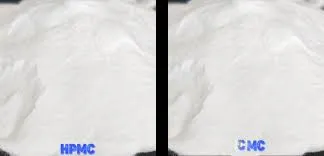
Nov . 10, 2024 21:10 Back to list
Understanding Hydroxyethyl Cellulose and Its Applications in Various Industries
Understanding Hydroxyethyl Cellulose A Multifunctional Polymer
Hydroxyethyl cellulose (HEC) is a non-ionic, water-soluble polymer derived from cellulose, a natural polymer found in the cell walls of plants. This versatile compound has gained immense popularity and widespread application across various industries, including pharmaceuticals, cosmetics, food, and construction. Its unique properties and functionalities make it an essential ingredient in many products, enhancing performance and improving user experience.
Chemical Structure and Properties
HEC is synthesized through the etherification of cellulose using ethylene oxide. This process introduces hydroxyethyl groups to the cellulose backbone, resulting in a compound that retains the fundamental properties of cellulose while exhibiting enhanced solubility in water. The degree of substitution—that is, the number of hydroxyethyl groups attached per glucose unit—plays a crucial role in determining the solubility and viscosity of HEC in aqueous solutions.
One of the notable characteristics of HEC is its ability to form viscous and stable solutions even at relatively low concentrations. The viscosity can be adjusted by manipulating the molecular weight and the degree of substitution, making it a highly customizable polymer. HEC is also non-toxic and biodegradable, which adds to its appeal in various applications.
Applications in Different Industries
1. Pharmaceuticals In the pharmaceutical industry, HEC is commonly used as a thickening agent, stabilizer, and emulsifier in various formulations, including syrups, gels, and ointments. Its ability to modify the viscosity of solutions allows for better control over drug delivery systems, enhancing the therapeutic effects of medications. Additionally, HEC is often utilized in ophthalmic preparations due to its excellent water retention properties, which help maintain moisture in eye drops.
2. Cosmetics and Personal Care The cosmetic industry values HEC for its thickening, binding, and film-forming properties. It is often found in creams, lotions, shampoos, and conditioners, where it enhances the smoothness and texture of products. HEC also contributes to the stability of emulsions, ensuring that oil and water components remain mixed and effective.
what is hydroxyethyl cellulose

3. Food Industry Hydroxyethyl cellulose is recognized as a food additive (designated E461) and is utilized as a thickener, stabilizer, and emulsifier in various food products. It can improve the texture and mouthfeel of food items, making it an essential ingredient in sauces, dressings, and dairy products. Moreover, HEC is used to enhance the shelf life of products by controlling moisture and texture, preventing separation, and maintaining quality during storage.
4. Construction In the construction industry, HEC serves as a valuable additive in cement and mortar formulations. It improves workability, increases water retention, and enhances the adhesion properties of construction materials. By incorporating HEC, builders can ensure better consistency and performance in their products, leading to stronger and more durable constructions.
Advantages of Hydroxyethyl Cellulose
The multifunctional nature of HEC brings numerous advantages, making it a preferred choice in various applications. Its non-toxic and biodegradable nature aligns with the growing consumer demand for sustainable and environmentally friendly products. Additionally, HEC's ability to retain water makes it invaluable in formulations that require hydration, whether in cosmetics or pharmaceuticals.
Moreover, HEC is easy to incorporate into formulations and can be adjusted to achieve the desired viscosity and texture. Its stability across a range of pH levels and temperatures adds to its versatility, allowing manufacturers to create formulations that suit various environments and conditions.
Conclusion
In summary, hydroxyethyl cellulose is a versatile and multifunctional polymer that plays a significant role in multiple industries. Its unique properties, including solubility, thickening ability, and non-toxic nature, make it an essential ingredient in pharmaceuticals, cosmetics, food, and construction. As industries seek sustainable and effective solutions, HEC stands out as a valuable component that enhances product performance and user satisfaction. Whether involved in drug delivery, skin care, or construction, the importance of hydroxyethyl cellulose cannot be overstated, foreseeing a robust future for this remarkable compound.
-
Versatile Hpmc Uses in Different Industries
NewsJun.19,2025
-
Redispersible Powder's Role in Enhancing Durability of Construction Products
NewsJun.19,2025
-
Hydroxyethyl Cellulose Applications Driving Green Industrial Processes
NewsJun.19,2025
-
Exploring Different Redispersible Polymer Powder
NewsJun.19,2025
-
Choosing the Right Mortar Bonding Agent
NewsJun.19,2025
-
Applications and Significance of China Hpmc in Modern Industries
NewsJun.19,2025







